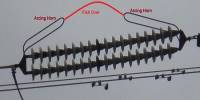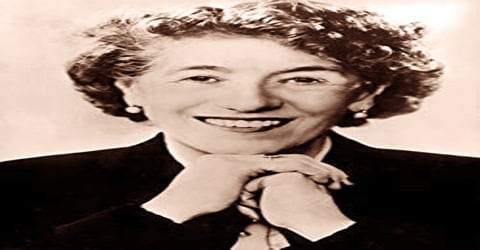Electrical engineers and material scientists from UCR demonstrated a scientific breakthrough that could lead to significant improvements in computer, optical, and electrical technology.
The research team at the Marlan and Rosemary Bourns College of Engineering, under the direction of eminent professor Alexander Balandin, has demonstrated in the lab the special and useful properties of recently developed materials, which they refer to as quantum composites.
These composites consist of small crystals of called “charge density wave quantum materials” incorporated within a polymer (large molecules with repeating structures) matrix. Charge density wave material goes through a phase transition when heated or exposed to light, which causes the composites to react electrically in a unique way.
The quantum composites developed by Balandin’s team showed functionality over a far larger range of temperatures and had a significantly improved capacity for power storage, giving them an exceptional potential for utility compared to other materials that disclose quantum phenomena.
The University of California, Riverside, researchers describe the unique properties in a paper titled “Quantum Composites with Charge-Density-Wave Fillers” published in the journal Advanced Materials. The lead authors of the paper are Zahra Barani and Tekwam Geremew, UCR graduate students with the college’s Department of Electrical and Computer Engineering, who synthesized and tested the composites.
We hope that our ability to preserve the quantum condensate phases in the charge-density-wave materials even inside disordered composites and even above room temperature can become a game changer for many applications. It is a conceptually different approach for tuning the properties of composites that we use in everyday life.
Professor Alexander Balandin
Another UCR graduate student Maedeh Taheri is a co-author who helped with electrical measurements. Balandin and Fariborz Kargar, an assistant adjunct professor and project scientist, are the corresponding authors.
When referring to materials and equipment, the word “quantum” describes how electrons act more like waves than like particles. A new generation of computer, electrical, and optical technologies can take advantage of materials with peculiar properties due to the wave nature of electrons.
For creating quantum computers that surpass the restrictions of the majority of computing that is now based on circuits that use binary bits for computations, materials that show quantum phenomena are sought after. Super-sensitive sensors utilized in a variety of electronic and optical applications are also in need of such materials.
“But the materials with quantum phenomena have major drawbacks,” Balandin said.
“The problem with these materials is that the quantum phenomena are fragile and typically observed only at extremely low temperatures,” he said. “The defects and impurities destroy the electron wave function.”
Surprisingly, the charge density wave material in the quantum composites developed in Balandin’s laboratory demonstrated functionality up to 50oC above room temperature. This transition temperature is comparable to the temperature at which computers and other electrical devices work and heat up. This temperature tolerance makes a variety of uses for quantum composites in electronics and energy storage possible.
The scientists also discovered that the dielectric constant, which measures a material’s capacity to store electricity, is extraordinarily high in quantum composites. Electrically insulating composites’ dielectric constant improved by more than two orders of magnitude, enabling the development of smaller and more potent energy storage capacitors.
“Energy storage capacitors can be found in battery-powered applications,” Balandin said. “Capacitors can be used to deliver peak power and provide energy for computer memory during an unexpected shut-off. Capacitors can charge and discharge faster compared to batteries. In order to broaden the use of capacitors for energy storage, one needs to increase the energy per volume. Our quantum composite material may help to achieve this goal.”
Another possible application for quantum composites is reflective coating. The light reflection from composite-coated glasses and windows can be altered by altering the dielectric constant, which can be done by heating, exposure to light, or application of an electrical field.
“We hope that our ability to preserve the quantum condensate phases in the charge-density-wave materials even inside disordered composites and even above room temperature can become a game changer for many applications. It is a conceptually different approach for tuning the properties of composites that we use in everyday life,” Balandin added.
The team at UCR collaborated with Megan Stokey, Matthew Hilfiker, and Mathias Schubert, of the University of Nebraska, who conducted some of the optical measurements, and Nicholas Sesing and Tina Salguero of the University of Georgia, who synthesized an ingredient material used in the composite preparation at UCR.















